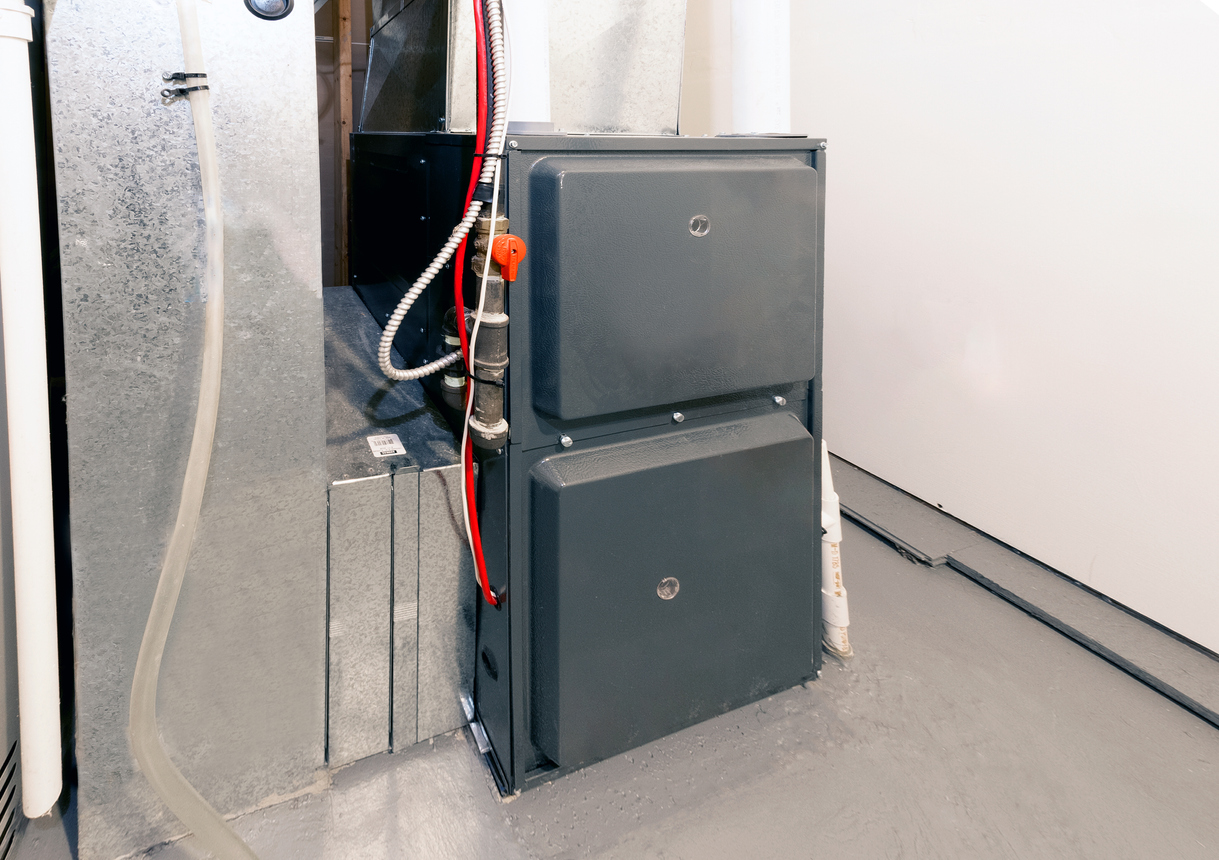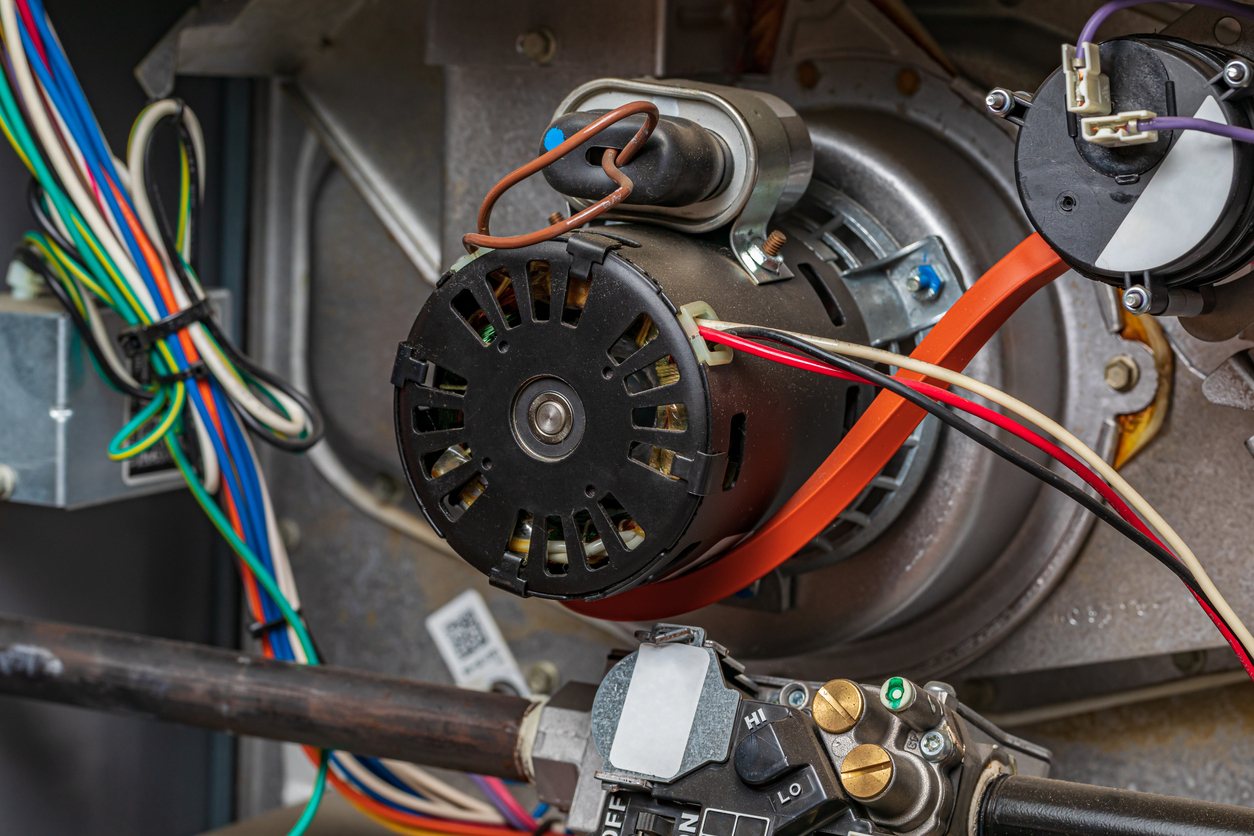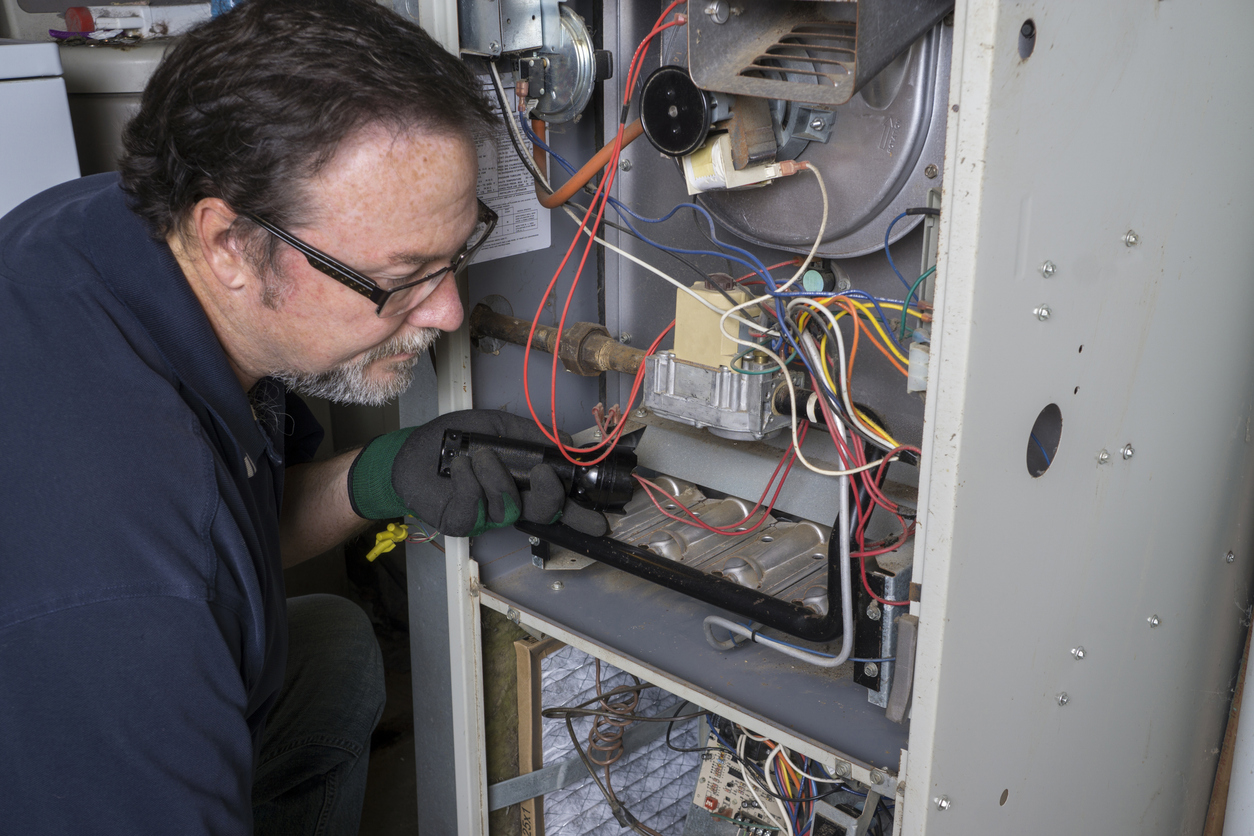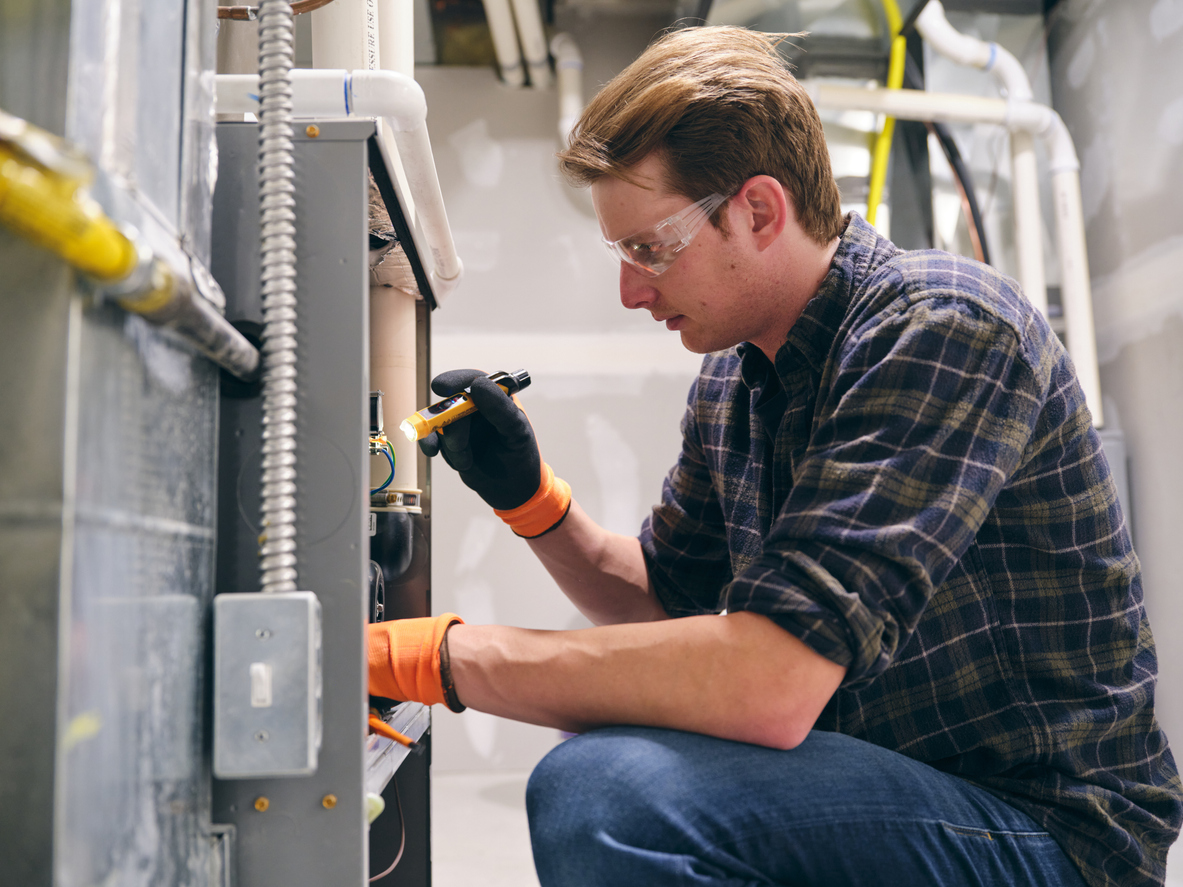We may earn revenue from the products available on this page and participate in affiliate programs. Learn More ›
Q: My furnace recently started making loud noises and seems to have weak airflow. I think the blower motor may be going bad, but I’m not sure. Is it better to replace my blower motor or buy a new furnace?
A: Weak airflow and loud noises are both signs of a failing or damaged blower motor in the furnace, so the blower motor may indeed be at fault. However, it may take an inspection to determine whether it’s necessary to replace the blower motor or buy a new furnace. This can be determined by considering a number of factors including budget, the age of the furnace, and how much repairs are likely to cost. For example, it may make more sense to replace a blower motor if the furnace is new and has no other significant issues. However, an older furnace with limited time left in its lifespan could probably be replaced altogether. Weighing a few factors specific to the situation can help clarify the best course of action.
A furnace’s age is a key factor in deciding whether to replace the blower motor or the entire unit. If the furnace is only a few years old, replacing the blower motor will likely be the more practical solution.
The typical lifespan of a furnace is between 15 and 20 years, which is important to keep in mind when deciding between replacing the blower motor and buying a brand-new furnace. The average cost of a new furnace is $4,727. When possible, homeowners are likely to prefer paying for a much less expensive blower motor repair than a new heating system. For this reason, blower motor replacement may be the best choice for a furnace that is less than 10 years old. A new blower motor in a relatively new furnace can last up to 20 years before requiring another replacement. On the other hand, furnaces closer to 15 years old will start to become less efficient and experience more wear and tear. Since these units are already nearing the end of their lifespan, it may not be as cost-effective to invest in a new blower motor for an aging furnace.
Relatively new furnaces may also still be under a manufacturer’s warranty, meaning that the cost to replace the blower motor could be partially or fully covered.
Depending on the age of the furnace, major parts or repairs may be covered by a manufacturer’s warranty. It is typically fairly simple to find out if the blower motor is covered by looking up the unit’s serial number on the manufacturer’s website or getting in touch with a customer service representative. Replacing a blower motor costs an average of $560, which includes furnace parts and labor. Even if the terms of the warranty only partially cover a new blower motor, it is still likely to cost less than paying for the part out of pocket. Most new furnaces come with a 10-year parts limited warranty, so if the furnace is under 10 years old, it’s worth looking into. A new furnace will come with a brand-new blower motor, so if the motor goes bad, it’s best to have it inspected by a professional to determine if it needs to be repaired or replaced.

If the blower motor is the only part that is malfunctioning, replacing it will likely cost less than having a brand-new furnace installed.
Most furnace blower motors can be expected to last around 10 to 20 years, so if that’s the only issue with the furnace, then a one-time repair could suffice as the furnace isn’t at the end of its rope. For those who are not appliance repair technicians, it may not be clear whether the blower motor is the source of the furnace’s issues or if another part is malfunctioning. However, there are a few common blower motor problems to look out for:
- Overheating
- Inconsistent airflow
- Electrical problems
- Frozen motor
- Debris buildup
- Age-related wear and tear
- Incorrect motor speed
A main reason furnace blower motors fail is due to age or lack of maintenance. If annual furnace maintenance has been neglected, the furnace blower motor could fail due to a buildup of dirt and debris in the motor components, as well as blocked fan blades, lubrication issues, overheating, and inadequate airflow (furnace cleaning costs around $70 to $300). Depending on the type of furnace or blower motor, the good news is that a new blower motor will ideally only need to be replaced every decade or two, so it’s a sound investment.
While prices ultimately depend on the type of blower motor the furnace requires, furnace blower motor replacement costs are typically between $250 and $900. Costs will vary by blower motor horsepower.
| Blower Motor Size | Average Cost Range (Materials Only) |
| ¼ horsepower | $100 to $550 |
| ⅓ horsepower | $100 to $800 |
| ½ horsepower | $120 to $1,000 |
| ¾ horsepower | $180 to $1,500 |
| 1 horsepower | $250 to $2,000 |
However, if the furnace is more than 15 years old and has shown additional signs of wear, replacing the unit may be a more cost-effective option.
A furnace will typically last anywhere from 15 to 20 years, but it can begin to lose efficiency after 15 years. If the furnace is reaching the 15-year mark and is showing signs of a breakdown, replacing it may be the best option. The cost of a new furnace can range anywhere from $2,817 to $6,814. While this cost is not insignificant, installing a new furnace can increase the quality of the home’s indoor heating and ensure that the heating system is as efficient as possible. Once it reaches the end of its projected span, the furnace may be loud or start to show other signs of wear:

- Uneven heating
- Unusual noises
- Pilot light issues
- Short cycling
- Rust, corrosion, or cracks
- Reduced or inadequate heat
- Increased heating bills
While furnace repair costs range from $131 to $486, those costs can start to add up if multiple breakdowns occur back-to-back or within a few years. Plus, they can lead to a major failure of the system, leaving the home without heat in the middle of winter. In this instance, it’s probably preferable to pay for a new furnace than to continually pay for repairs.
It’s worth noting that a brand-new furnace will likely be more efficient, which can make replacement worth it as a result of lower energy costs.
Today’s furnaces are designed to be more energy efficient than older models by using advanced technology and better insulation to maximize heat output while minimizing energy consumption. This means they can heat a home more effectively with less fuel or electricity. Some modern furnaces can even be integrated into zoning systems that make it possible to heat different areas of the home independently. This can help reduce energy consumption by allowing homeowners to avoid heating unoccupied rooms. In addition to saving on utility bills, a more energy-efficient furnace can also help homeowners reduce their carbon footprint. According to the U.S. Department of Energy, upgrading to a more efficient system can save as much as 2.5 tons of carbon dioxide emissions annually. With this in mind, much of the cost of a new furnace and installation may be recouped in a number of years.
Homeowners who upgrade to an Energy Star–certified furnace may also be eligible for tax credits.
In the event that it’s necessary to forgo furnace repair and pay for furnace replacement, homeowners can become eligible for tax credits by installing an Energy Star–certified system. According to Energy Star, those who purchase an eligible gas or oil furnace can claim 30 percent of the project costs on their taxes for a maximum credit of $600. In order to qualify for this specific certification, the furnace must meet the following requirements:
- Gas furnaces: Must offer a rating of 97 percent Annual Fuel Utilization Efficiency (AFUE) or greater.
- Oil furnaces: Must use fuel blends with at least 20 percent of the volume consisting of biodiesel, renewable diesel, or second-generation biofuel.

Although a new furnace costs more initially compared with a basic blower motor replacement, tax credits and reduced utility bills can result in significant savings in the long run. Plus, upgrading to a new furnace will reduce the likelihood of constant repairs or the furnace not turning on during the middle of winter.
If it’s still unclear whether to replace the blower motor or the entire furnace, getting a quote for each project can help clarify the best course of action.
There are plenty of factors that can complicate the decision between replacing a blower motor or buying a new furnace. Fortunately, an inspection and quote from a professional can help settle the score. A licensed HVAC technician will be able to look at the furnace, assess the issue, and provide a quote for each project as well as their expert opinion on which route might work best. With this knowledge, homeowners will have a better idea of the state of the system and how many years furnace blower motor replacement can add to the lifespan of the HVAC unit, clarifying whether it’s worth it to pay for the cost of a new furnace.
It’s a good idea to let an HVAC professional handle furnace service to ensure the unit is functioning safely and effectively.
Although it can be tempting for homeowners to learn how to replace a blower motor or install a new furnace themselves, it’s generally better to leave these tasks to one of the best HVAC companies. Furnace repair comes with electrical and gas hazards, so this is a project best handled by licensed professionals who can spot any warning signs or issues. An HVAC professional will have completed specific safety training and own the proper protective gear and equipment to tackle hazardous situations.
The other risk of attempting to service a furnace is creating more work by replacing a part incorrectly or doing more damage to the appliance. Homeowners who have a home warranty will also want to keep in mind that their policy likley requires repairs to be made by a professional. Therefore, any DIY work could cause the warranty to be voided.
Purchasing a home warranty can help reduce future furnace repair costs.
For homeowners who don’t already have a home warranty in place, purchasing a home warranty that covers HVAC can help with expensive system repairs. This is especially helpful when someone is moving into a new home with an older furnace that doesn’t need a full replacement but may experience a few issues until it has reached the end of its lifespan. Once the home warranty is in effect, it can make the cost of minor to major repairs more manageable since customers are only required to pay a flat fee for each repair. The best home warranty companies for HVAC like American Home Shield and Liberty Home Guard offer a variety of plans so that homeowners can choose the amount of coverage that best suits their needs. Some companies will even cover the cost of a furnace tune-up to keep the unit in good condition for years to come.
Sources: HomeAdvisor, Angi, Energy Star, Energy.gov


